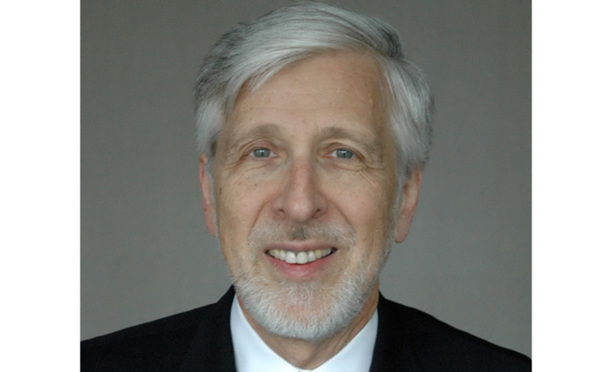Commonly Used Copyright Assignment Language Is Invalidated by Third Circuit
For copyrights, many form agreements include standard assignment clauses that use some variation of language that the work will be deemed a "work for hire" and hence owned by the hiring party. But the validity of such language is now suspect.
August 30, 2019 at 11:40 AM
7 minute read
 Milton Springut
Milton Springut
Assignments of copyright and other intellectual property rights are common both in employment and other types of agreements.
For copyrights, many form agreements include standard assignment clauses that use some variation of language that the work will be deemed a "work for hire" and hence owned by the hiring party. But the validity of such language is now suspect.
The U.S. Court of Appeals for the Third Circuit's recent decision in T.D. Bank v. Hill (3d Cir. 2019) considered such widely used language in an agreement meant to transfer copyright in a manuscript, holding that language invalid.
The Third Circuit noted that "work for hire" is a creation of the Copyright Act, whereby a work created by an employee in the scope of his employment is deemed to have been authored by the employer. Parties cannot agree to "deem" a work one for hire—it has to be one under the Copyright Act through application of the factors set out by the U.S. Supreme Court.
T.D. Bank now squarely calls into question the use of such language in assignment agreements and counsel involved in drafting such assignments should strongly consider using different language if the intended result is to be achieved.
It is recommended that additional language be included in copyright assignment language, to the effect that if the work is not deemed "for hire," then alternatively the person agrees to assign all rights to the hiring party.
Background
Vernon W. Hill II headed Commerce Bank from 1973 until June 2007, when it was sold to T.D. Bank. Hill has been described as the "closest thing that the staid banking industry has to a rock star."
In 2006, Hill decided to write a book about his experience in the banking industry, and the bank's Board of Directors supported that endeavor by hiring a business book author to collaborate with him, and then supporting its publication through a division of Penguin Books.
Commerce Bank entered into a publishing agreement; Hill signed a letter to the Publisher that attached that agreement and contained the following language:
I hereby unconditionally guarantee, promise and agree with the Publisher, its successors and assigns that the Author [i.e., Commerce Bank] will, in all respects, faithfully perform and fulfill all obligations of the Agreement on its part to be performed and fulfilled at the time and in the manner therein provided. I also unconditionally guarantee that the Work is a work made for hire within the meaning of the United States Copyright Law and that the Author is the owner of copyright in the Work and has full power and authority to enter into the Agreement.
Hill's relationship with the bank thereafter soon soured, however. Commerce Bank was taken over by T.D. Bank and the manuscript was never published. Several years later, Hill tried to use portions of the book in a new autobiographical work. T.D. Bank sued for copyright infringement.
The district court ruled in the bank's favor and rejected Hill's defense that as a co-author of the manuscript, he was entitled to use it. It ruled that the deemed work for hire clause meant that the work had to be treated as such, and thus T.D. Bank was the owner.
Third Circuit Ruling
The Third Circuit, however, rejected this analysis. It noted that "work for hire" is a statutorily defined term added in the 1976 Copyright Act, and which in fact modified the prior work for hire doctrine under the 1909 Act. The standard under the 1976 Act reflects a compromise between copyright owners and individual authors, who were unhappy with the prior law.
Under the 1976 Act, a work for hire is generally only where the creator is an employee acting within the scope of his or her employment. 17 U.S.C. §101. (There are a few, narrow exceptions whereby works created by an independent contractor are also treated as works for hire, see id., but Hill's manuscript did not qualify.)
The Supreme Court set out the factors for determining whether a work is "for hire" in Community for Creative Non-Violence v. Reid, 490 U.S. 730 (1989). But the district court never considered these factors, it simply held that the agreement made the work one "for hire." This was error.
The Third Circuit pointed out that there are important differences between a work for hire and one created by an author and then assigned to someone else.
When an employee creates a work for hire, the employer is considered the Author. In an assignment situation, in contrast, the creator is the author and initially owns the copyright, which can then be transferred or assigned.
One important difference between works for hire and assignments is that the Copyright Act provides that the Author has the right, between 35 and 40 years, to cancel the transfer—and this cancellation right is not waivable. See 17 U.S.C. §203(a)(3). That cancellation right does not apply to a work for hire situation, however. The Third Circuit reasoned that the statutory cancellation right would be eviscerated if the parties could simply agree by contract that the work is to be deemed "for hire."
Nevertheless, the Third Circuit ruled for T.D. Bank on different grounds.
It noted that Hill had acknowledged in the publishing agreement that the bank had entered into with the publishing company, and that agreement contained language that the bank was the sole author of the work, would perform all duties under the publishing agreement, and had the full power to make the agreement.
Read in its totality, Hill's letter and attachment of the publishing agreement, the court said, evidenced an "unmistakable intent" to transfer his rights to the bank. So, in the end, T.D. Bank was ruled the owner (if not necessarily the author) of the manuscript.
Lesson To Be Learned—Examine Transfer Language
We have seen many copyright agreements that contain language similar to that in T.D. Bank that states that certain works are to be deemed "works for hire."
This is a mistake—as the Third Circuit ruled, whether something is a work for hire is a matter of copyright law as applied to the facts and cannot be made so by agreement.
In many cases, a work will be "for hire" anyway, but one should not rely on contractual language to achieve that result.
Rather, it is recommended that additional language be added that effects an assignment in case a work is deemed not for hire. Such language could say:
To the extent any created work is determined not to be a work for hire, then the creator/author/designer hereby agrees to transfer and assign all rights in the work, including any copyright worldwide, to the Hiring Party.
This of course is often a good idea anyway in many situations. Work for hire is a copyright doctrine; there is no equivalent in patent or trade secret law, for example. So a broad agreement between an employee and employer should provide for a broad transfer of all intellectual property rights for anything created as part of the employment. Such a transfer would have to be stated in the language of assignment or conveyance, not "work for hire."
In any event, the T.D. Bank decision should cause re-examination of such commonly used clauses.
Milton Springut is a partner at Springut Law PC.
This content has been archived. It is available through our partners, LexisNexis® and Bloomberg Law.
To view this content, please continue to their sites.
Not a Lexis Subscriber?
Subscribe Now
Not a Bloomberg Law Subscriber?
Subscribe Now
NOT FOR REPRINT
© 2025 ALM Global, LLC, All Rights Reserved. Request academic re-use from www.copyright.com. All other uses, submit a request to [email protected]. For more information visit Asset & Logo Licensing.
You Might Like
View All
Big Law Sidelined as Asian IPOs in New York Are Dominated by Small Cap Listings

The Benefits of E-Filing for Affordable, Effortless and Equal Access to Justice
7 minute read
A Primer on Using Third-Party Depositions To Prove Your Case at Trial
13 minute read
Shifting Sands: May a Court Properly Order the Sale of the Marital Residence During a Divorce’s Pendency?
9 minute readTrending Stories
- 15th Circuit Considers Challenge to Louisiana's Ten Commandments Law
- 2Crocs Accused of Padding Revenue With Channel-Stuffing HEYDUDE Shoes
- 3E-discovery Practitioners Are Racing to Adapt to Social Media’s Evolving Landscape
- 4The Law Firm Disrupted: For Office Policies, Big Law Has Its Ear to the Market, Not to Trump
- 5FTC Finalizes Child Online Privacy Rule Updates, But Ferguson Eyes Further Changes
Who Got The Work
J. Brugh Lower of Gibbons has entered an appearance for industrial equipment supplier Devco Corporation in a pending trademark infringement lawsuit. The suit, accusing the defendant of selling knock-off Graco products, was filed Dec. 18 in New Jersey District Court by Rivkin Radler on behalf of Graco Inc. and Graco Minnesota. The case, assigned to U.S. District Judge Zahid N. Quraishi, is 3:24-cv-11294, Graco Inc. et al v. Devco Corporation.
Who Got The Work
Rebecca Maller-Stein and Kent A. Yalowitz of Arnold & Porter Kaye Scholer have entered their appearances for Hanaco Venture Capital and its executives, Lior Prosor and David Frankel, in a pending securities lawsuit. The action, filed on Dec. 24 in New York Southern District Court by Zell, Aron & Co. on behalf of Goldeneye Advisors, accuses the defendants of negligently and fraudulently managing the plaintiff's $1 million investment. The case, assigned to U.S. District Judge Vernon S. Broderick, is 1:24-cv-09918, Goldeneye Advisors, LLC v. Hanaco Venture Capital, Ltd. et al.
Who Got The Work
Attorneys from A&O Shearman has stepped in as defense counsel for Toronto-Dominion Bank and other defendants in a pending securities class action. The suit, filed Dec. 11 in New York Southern District Court by Bleichmar Fonti & Auld, accuses the defendants of concealing the bank's 'pervasive' deficiencies in regards to its compliance with the Bank Secrecy Act and the quality of its anti-money laundering controls. The case, assigned to U.S. District Judge Arun Subramanian, is 1:24-cv-09445, Gonzalez v. The Toronto-Dominion Bank et al.
Who Got The Work
Crown Castle International, a Pennsylvania company providing shared communications infrastructure, has turned to Luke D. Wolf of Gordon Rees Scully Mansukhani to fend off a pending breach-of-contract lawsuit. The court action, filed Nov. 25 in Michigan Eastern District Court by Hooper Hathaway PC on behalf of The Town Residences LLC, accuses Crown Castle of failing to transfer approximately $30,000 in utility payments from T-Mobile in breach of a roof-top lease and assignment agreement. The case, assigned to U.S. District Judge Susan K. Declercq, is 2:24-cv-13131, The Town Residences LLC v. T-Mobile US, Inc. et al.
Who Got The Work
Wilfred P. Coronato and Daniel M. Schwartz of McCarter & English have stepped in as defense counsel to Electrolux Home Products Inc. in a pending product liability lawsuit. The court action, filed Nov. 26 in New York Eastern District Court by Poulos Lopiccolo PC and Nagel Rice LLP on behalf of David Stern, alleges that the defendant's refrigerators’ drawers and shelving repeatedly break and fall apart within months after purchase. The case, assigned to U.S. District Judge Joan M. Azrack, is 2:24-cv-08204, Stern v. Electrolux Home Products, Inc.
Featured Firms
Law Offices of Gary Martin Hays & Associates, P.C.
(470) 294-1674
Law Offices of Mark E. Salomone
(857) 444-6468
Smith & Hassler
(713) 739-1250






